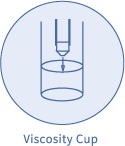In the Japanese Industrial Standard (JIS) Z 8803, viscometers are categorized into capillary tube viscometers, falling ball viscometers, rotational viscometers, and vibration viscometers. There are other methods of measuring viscosity such as the cup method and LST.
Rotational viscometers are commonly used. They are simply constructed and user-friendly, they can measure a wide range of substances, and they can take highly accurate measurements. Viscosity is determined by measuring the torque (shearing stress) used on the cylindrical surface of a cylindrical rotor inserted into the sample and rotating at a constant speed. There are several types of rotors, including coaxial cylinder, single cylinder, and cone plate rotors. With cone plate rotors, by changing the number of rotations, the flow characteristics of non-Newtonian fluids can be obtained.
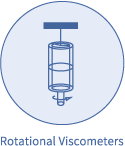
Kinematic viscosity is determined by passing the sample through a narrow tube and measuring the time it takes for the sample to pass through. The viscosity can be calculated using the sample's density (kinematic velocity = viscosity ÷ density). Capillary tube viscometers can measure Newtonian fluids with a relatively high level of precision. These viscometers are low cost and have been used for a long time, but the narrow tube makes cleaning complex, making it more troublesome for the user. ►Applications: petroleum products and pharmaceutical manufacturing.
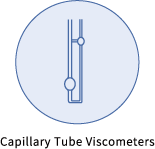
Viscosity is determined by dropping a ball into the sample and measuring how long it takes to fall to the bottom. Because the ball meets with fluid resistance from the sample, the speed the ball falls will be different depending on the viscosity of the sample. These viscometers can accurately measure the viscosity of Newtonian fluids, from low-viscosity fluids like water to high-viscosity fluids like oil.
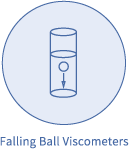
Viscosity is determined by inserting a vibrating instrument into a sample and measuring the viscous resistance when vibrating at a constant frequency. Vibration viscometers have a quick response time and can perform successive measurements. They are used as in-line process viscometers because of their ability to measure liquid as it is flowing.
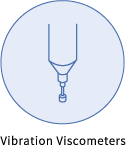
Viscosity is determined by filling a metal cup with the sample, draining the sample through an orifice (puncture) in the base of the cup, and measuring the time it takes for the sample to flow out. The time it takes for the sample to flow out of the orifice is generally measured with a stopwatch. ►Applications: paints and industrial oils (rarely used in the food industry).
